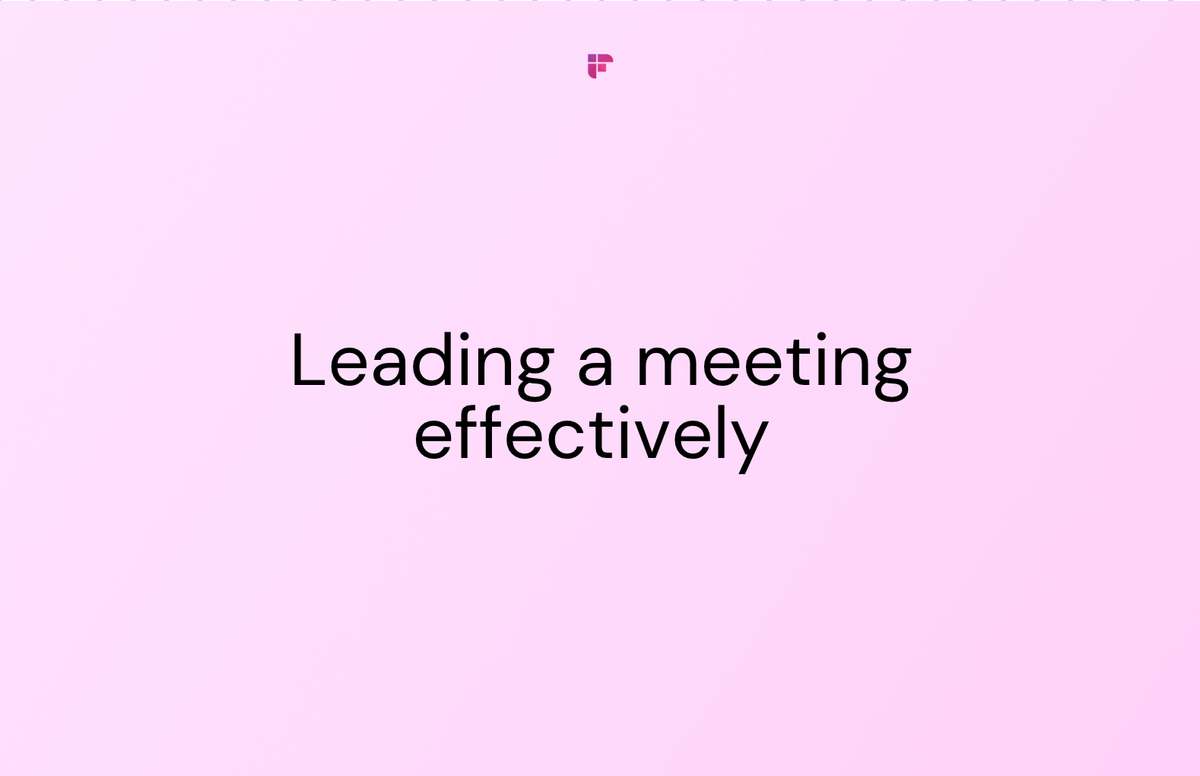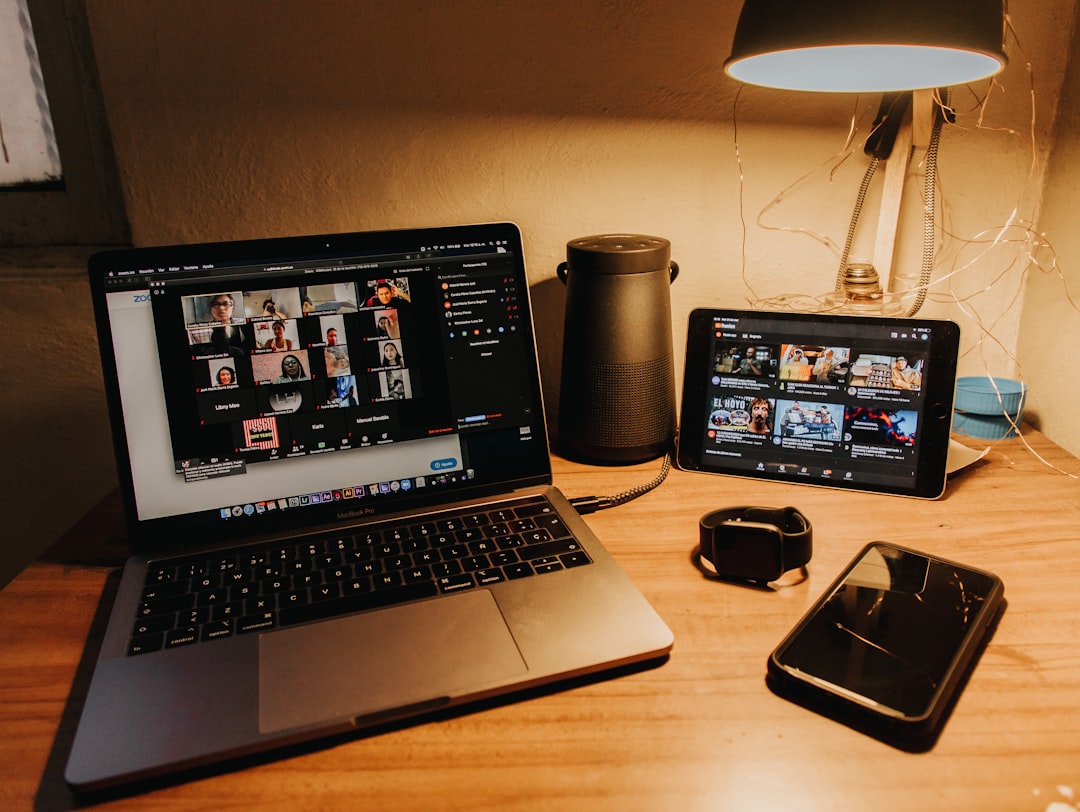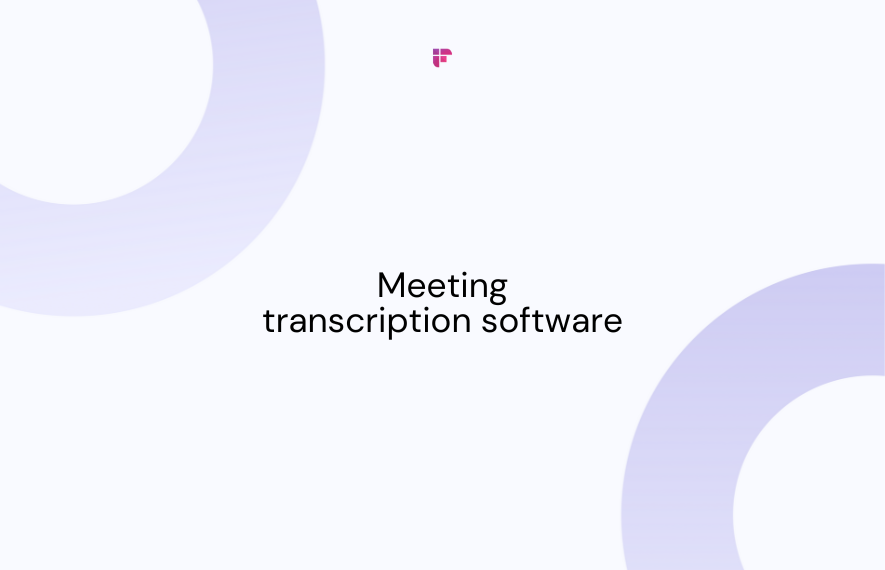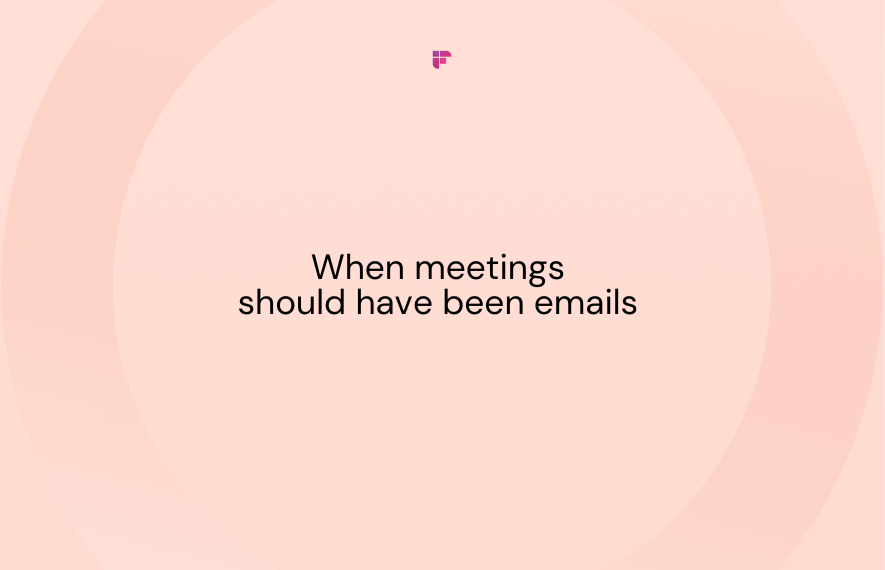Are you tired of disorganized team meetings that eat up valuable time without achieving much?
You're not alone. Studies show ineffective meetings cost businesses billions yearly, especially poorly structured stand-ups.
Consider these facts:
- America holds over 11 million meetings daily, costing an average of $338 each.
- 63% of meetings lack a pre-planned agenda, contributing to significant time wastage.
- These ineffective meetings drain up to $283 billion from the US economy.
So, what's the solution? Daily stand-up meetings offer a remedy by shortening the duration to 15 minutes and deferring off-topic discussions.
However, to successfully hold a daily stand-up meeting, you need to prepare an agenda. And that's what we are going to show you today.
In this article, we'll explain how to create a daily stand-up meeting agenda in a few simple steps.

What is a daily stand-up meeting?

A daily stand-up meeting is a brief gathering held regularly, often every morning, where team members discuss their progress, plans, and any challenges they're facing.
These meetings typically last around 15 minutes and are conducted standing up to keep it short and focused. Each team member briefly shares updates on what they've accomplished since the last meeting, what they plan to do next, and if they're encountering any challenges.
These meetings are also referred to as,
- Daily Scrum
- Morning Roll-call
- Daily Agile Meeting
- Morning Huddle
- Daily Check-in
- Quick Sync
- Morning Meeting

What is a daily stand-up meeting agenda?

A meeting agenda is a list of topics to discuss in a meeting. It shows how much time is set aside for each topic and who will talk about it.
A daily stand-up meeting agenda outlines a brief session where team members provide updates on their progress, plans, and challenges.
It typically includes three main parts,
- Sharing what each person accomplished since the last meeting
- Discussing what they plan to do next
- Mentioning any blockers they're experiencing
The agenda of a daily stand-up meeting aims to keep the meeting focused, efficient, and informative, fostering collaboration and accountability within the team.

Why daily stand-up meetings should follow an agenda?

You might wonder why agile stand-up meetings need an agenda when they're already short. Well, without one, there's no assurance the meeting will stay short or achieve its goals.
Here are a few reasons why having an agenda for daily stand-up meetings is important:
- Efficiency: An agenda keeps discussions focused, preventing the meeting from dragging on unnecessarily.
- Goal Achievement: It ensures that the meeting stays on track and achieves its intended objectives.
- Clarity: Having a clear agenda for daily stand-up meetings helps participants prepare and understand what's expected, reducing confusion.
- Time Management: An agenda helps allocate time effectively for each topic, ensuring all important points are covered within the allotted time frame.

How to create a daily stand-up meeting agenda?

1. Define meeting purpose and goals
Clearly outline the purpose of the daily stand-up meeting. It typically provides a quick status update on tasks, identifies any blockers, and coordinates team efforts.
Set specific goals such as improving communication, increasing team alignment, and resolving issues promptly.
2. Select a suitable time and duration
Choose a consistent time that works for all team members. Typically, morning meetings are preferred to kick-start the day.
Keep the duration short and focused, ideally between 10 to 15 minutes. Assign a specific duration for discussing each topic to keep the meeting concise.
3. Determine participants
Identify the team members who need to attend the stand-up meeting. Usually, it includes all team members directly involved in the project or relevant stakeholders.
Identify who will lead the discussion for each topic to ensure everyone contributes.
4. Draft the agenda
Create a structured agenda for daily stand-up meetings to guide the discussion. Keep it simple and concise.
Include the following key points:
- Team member name
- Yesterday's accomplishments
- Today's plans
- Any blockers or challenges faced
5. Share the agenda
Distribute the daily stand-up meeting agenda to all participants ahead of the meeting. This allows everyone to prepare their updates and ensures that the meeting stays on track.

Tips on creating a daily stand-up meeting agenda
In addition to following the steps outlined above, consider these helpful tips to refine your agile daily stand-up meeting agenda:
1. The basic blueprint

Keep it short yet informative, and concentrate on getting answers to three questions:
- What tasks did I complete yesterday?
- What tasks will I complete today?
- What are the blockers?
This way, you cover essential topics of immediate significance with the least number of questions. As your employees answer these questions individually, they provide their peers with three pieces of information summarizing their progression.
You can also improvise and include more questions or modify the existing agenda of the daily stand-up meeting according to your team's requirements.

2. Task board

Often, the blockers raised in the meeting demand time and detailed discussions before a solution can be developed. The best way to deal with this is to construct a task board to write your team's blockers.
It has dual benefits – your team knows you are taking their concerns seriously, and it reduces drawn-out discussion during the stand-up time.
A task board, also known as an improvement board, can either be divided into columns determining the stages of progression or a straightforward one with just three divisions. For example-
- To Do: Stick your blockers in this section of the board.
- In Progress: Move them to this side when you are working on it.
- Done: Stick them here when you've effectively resolved them.
For remote teams, you can organize these sections in a shared Excel sheet using different colors. Another option is to use productivity apps with customizable cards. These apps let you categorize tasks into "to do," "doing," and "done" columns, making it easier to track progress and manage tasks together.

3. Deciding the order

The easiest way to decide who talks first is to start with the person standing on the manager's right and move clockwise. It is not a matter of great significance who goes first and who goes last unless the meeting is called to discuss a project.
There are other ways you can decide the order, like:
- Making The Person Who Comes Last Be The First to Speak: This would facilitate more punctual attendance; however, it might embarrass the person who may not be prepared to talk first.
- Throw The Ball: For this one, the manager can randomly throw the ball at any person in the circle to start. Once that person is done, they can throw the ball to someone else who has to speak next.
- Draw a Card: Your employees pick cards with numbers on them and speak accordingly. You can also ask the employees to choose the numbers they want instead of blindly picking cards.
Once you have concluded the meeting, signal that it has ended and that the rest of the discussion is officially "offline" now.

Daily stand-up meeting agenda examples

If you are still wondering how to create an agile daily stand-up meeting agenda, here are 2 examples for your inspiration:
Example 1: Daily stand-up meeting agenda

Example 2: Daily stand-up meeting agenda


How to run a daily stand-up meeting with a remote team?

Running a daily stand-up meeting with a remote team requires clear communication and coordination. Here's how to do it:
1. Pick a time
Choose a regular time that works for everyone, considering different time zones.
2. Use the right tools
Use video conferencing software like Zoom or Slack for easy communication. You can also use note-taking tools like Fireflies to automatically note down the key points of the meetings. Make sure everyone knows how to use it.
3. Plan an agenda
Make a simple agenda for the daily stand-up meeting, covering what each team member did yesterday, plans for today, and any problems they have. Share this agenda before the meeting.
4. Encourage everyone to speak
Make sure everyone has a chance to share updates and ask questions. Create a friendly atmosphere where everyone feels comfortable.
5. Keep it short
Keep the meeting short and focused. Stick to the agenda and avoid long discussions.
6. Use Fireflies to note down important points
Take notes during the meeting and share them afterward so everyone knows what was discussed. You can integrate Fireflies with video conferencing tools to automatically join daily stand-up meetings and take down notes for you.
7. Ask for feedback
Regularly ask for feedback to improve future meetings.

How Fireflies can improve your daily stand-up meetings?

The whole point of daily stand-up meetings is to reduce meeting time and make it more productive. However, manual note-taking can be time-consuming and cause employees to miss important details.
Fireflies AI note-taking tool addresses this issue by seamlessly integrating into video conferencing apps, capturing every detail of the meeting. In addition to accurate recording and transcription, Fireflies summarizes and analyzes the entire meeting, providing precise meeting minutes, action items, and key metrics.
You can use the insights from the meetings to find the blockers and create better daily stand up meeting agenda. Moreover, with features like AskFred, Fireflies uncovers hidden insights, further improving meeting effectiveness and team productivity.


Key Features
- Transcribes meetings with 90% accuracy in 60+ languages
- Receive paraphrased meeting summaries once the meeting is over
- Integrates with 40+ video conferencing apps, dialers, CRMs, and more
- Get action items, questions, and other important metrics in a click
- Filter and listen to key topics discussed in your meetings
- Easily share and collaborate on meeting recaps with teammates
- Add comments, pins, and reactions to specific parts of conversations
- Create and share soundbites from meetings
- Get meeting analytics to improve your sales, recruiting, and internal processes
- Organize your meeting recaps by department, team, or project
- Offers Chrome extension and dedicated Android and iOS mobile apps
- AskFred answers all your questions about the meetings

Fireflies AI makes meetings smoother, helps teamwork, and makes sure nothing important gets missed. You can use Fireflies for free with its Forever Free plan or get more with paid plans starting at just $10 per month.
💡 Make Your Online Meeting More Productive
Improve your daily stand-up meeting productivity with Fireflies, simplifying note-taking and offering valuable insights.
Wrap up
Creating a daily stand-up meeting agenda is important for keeping the team aligned and productive. The agenda ensures clarity and efficiency by focusing on key topics like accomplishments, plans, and blockers. With a well-designed agenda, stand-up meetings become a valuable tool for driving team success.
You can also invite Fireflies to your meetings to take notes and organize meetings with timestamps for easy reference. Stay focused on your agenda while Fireflies handles the note-taking for you.







